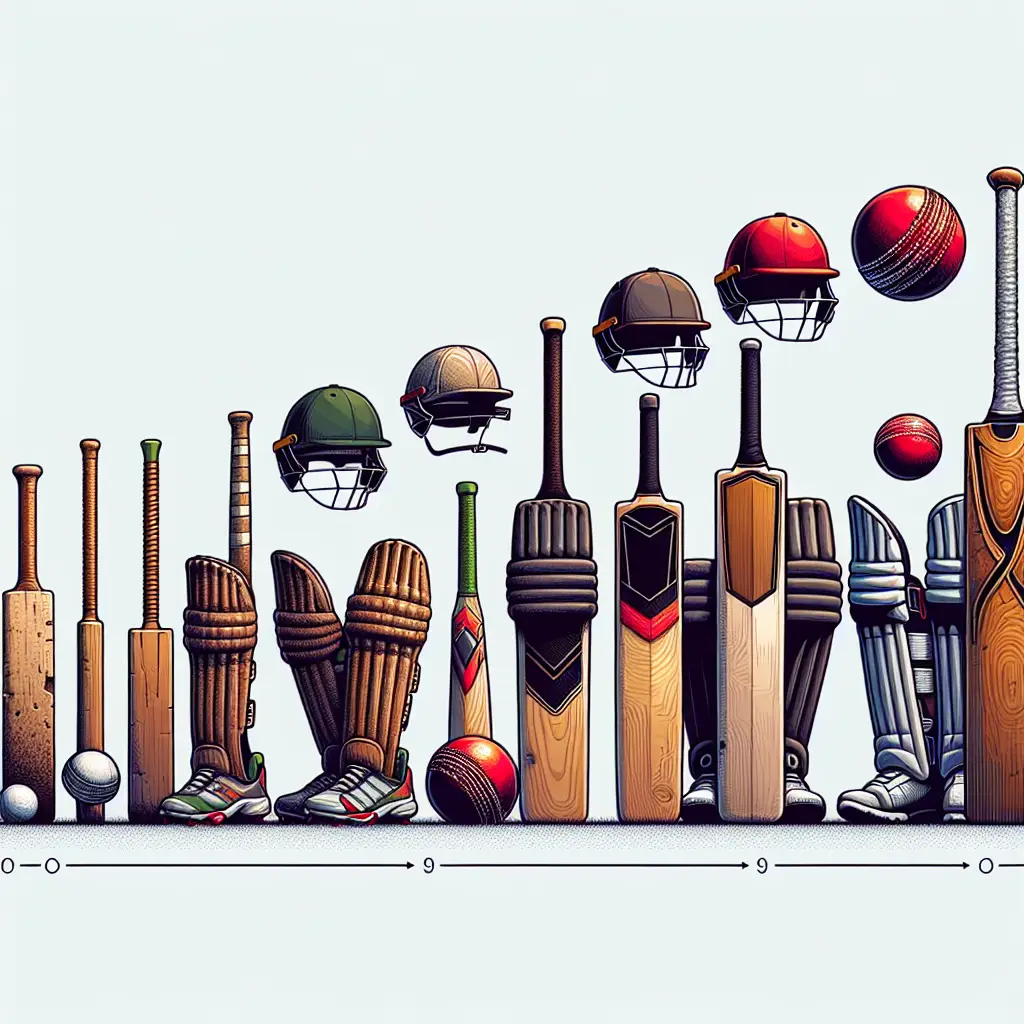The Evolution of Cricket Equipment: From Wood to Technology
1. Early Beginnings of Cricket Equipment
Cricket has been played for centuries, with historical records suggesting its origins in England during the late 16th century. The earliest cricket equipment was rudimentary. Players used wooden sticks or bat-like implements that resembled modern-day paddles. The cricket ball, originally crafted from leather-wrapped cork, was also quite different from today’s standards. These primitive tools laid the groundwork for a sport that would evolve dramatically over the years.
2. The Bat: From Wood to Innovation
2.1 The Traditional Bat
The first instances of bats were made from solid blocks of wood, usually willow. This wood was chosen for its strength and resilience. The bat’s size and shape have undergone numerous modifications. Early bats were wide and paddle-like, designed primarily for striking.
2.2 The Modern Bat Design
Today’s cricket bats feature a distinctive shape, with a pronounced blade and a thicker edge, allowing for better performance and control. The manufacturing process has evolved as well, using advanced woodworking methods to ensure uniformity in weight and balance. Modern bats use various grades of willow, which impact the bat’s performance and durability.
2.3 Technology in Bat Construction
As technology evolved, so did bat construction. Manufacturers began experimenting with materials like carbon fiber and composite combinations. These innovations provide enhanced performance while optimizing the bat’s weight, ensuring cricketers can maintain agility without sacrificing power.
3. The Cricket Ball: Crafting the Perfect Sphere
3.1 Evolution of the Ball
The standard cricket ball has transitioned from a simple leather sphere to a meticulously crafted object. The original balls were filled with cork and wrapped in leather. Over time, this transitioned into a more uniform construction method that provides consistent bounce and swing.
3.2 The Importance of Seam and Swing
The seam of the cricket ball is crucial in influencing its flight. Modern balls are manufactured to maintain a perfect seam that supports swing bowling—an art perfected by bowlers over the years. Different types of cricket, such as Test and One Day Internationals (ODIs), use specific design alterations in balls to enhance gameplay.
3.3 Ball Maintenance and Technological Advances
Cricketers now utilize specialized wax or oils to maintain the shine and condition of the ball, which plays a significant role in gameplay. Technology has also improved the quality control processes during manufacture, allowing for more consistency and reliability in performance.
4. Protective Gear: Safety Meets Performance
4.1 The inception of Protective Equipment
As cricket evolved into a competitive sport, it became essential to protect players from injury. Early protective gear included rudimentary pads and gloves made from leather. Players often employed improvised methods to ensure their safety on the field.
4.2 Introduction of Safety Gear
Today, protective equipment is a critical aspect of cricket. The evolution of pads, gloves, helmets, and abdominal guards has led to significant improvements in player safety. Modern helmets, equipped with faceguards and injury-resistant technology, ensure players can face fast bowlers and high-speed deliveries with confidence.
4.3 Technological Advancements in Protective Gear
The use of lightweight materials, such as Kevlar and high-density…
Share this content:
